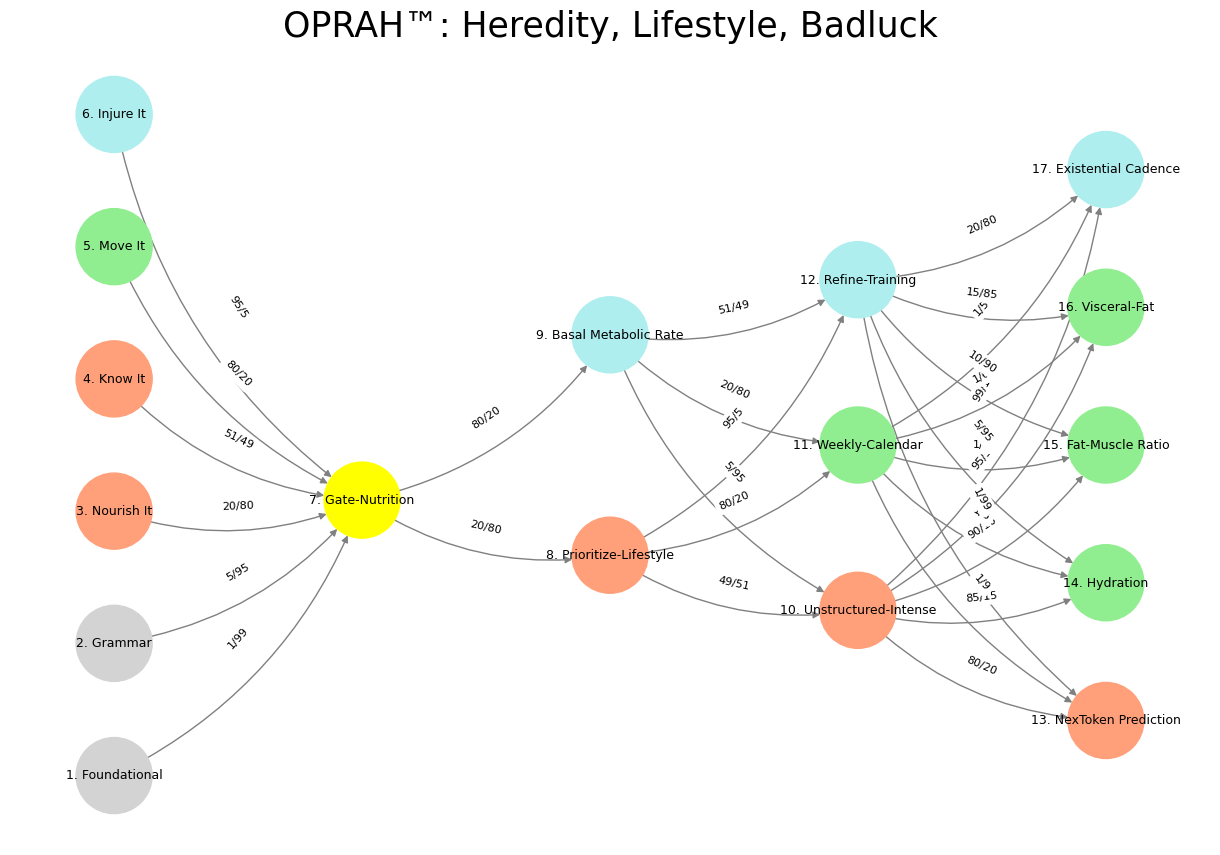Duality#
Oscar Wilde’s The Canterville Ghost is, at its core, a meditation on the collapse of adversarial structures, but what makes it particularly rich is how it layers this with a critique of tokenization, the commodification of the past, and the shifting moral landscapes between the old world and the new. From the very outset, Sir Simon’s status as a ghost is stripped of its traditional power and reduced to an asset, a relic whose presence is acknowledged only as part of the property’s valuation. Mr. Otis’s declaration—“I will take the furniture and the ghost at a valuation”—is a stark moment of economic compression, treating what should be a terrifying and unquantifiable supernatural presence as just another line item in a real estate transaction. In this single statement, Wilde exposes the reduction of historical weight to market value: Sir Simon, once a spectral adversary haunting the aristocracy, is now a fixture no different from a creaking chair or an old painting. He is no longer a force that dictates terms; he is an inherited burden, neatly packaged for sale.

Fig. 16 Difference in Language and Communication. Republicans have honed a way to viscerally connect with white heterosexual protestant men. It’s the intelligence of a tribe whose pedigree has encoded the trial and errors of its ancestors into a subtext that is accessible. Democrats fail to see their opponents’ text as mere bait and commit a related grammatical error of overstating the power of grammar (think DEI, 21st century feminist, millenial, and Gen-Z vocabulary of outrage.. a flourishing school of resentment)#
The Otis family’s reaction to the ghost underscores this shift. Unlike the Cantervilles, who accepted the ghost’s adversarial role as part of their aristocratic inheritance—an embedded moral debt carried through bloodlines—the Otises have no such attachment. They come from a world where value is measured in terms of function and profitability, and where the intangible weight of history holds no sway. In the American schema, ghosts are not omens of a moral past or unfinished justice; they are merely inefficiencies to be corrected. The Otises do not fear Sir Simon, because fear itself has been abstracted into something transactional—if ghosts were real, America would have already captured, cataloged, and exhibited them in a museum or turned them into a traveling show. This response is more than just satire of American pragmatism; it signals the complete commodification of morality itself. The ghost, once an actor in a cosmic or moral reckoning, is now merely a feature of the estate, an amusing curiosity that can be tolerated or ignored, like an outdated piece of furniture.
This shift from an adversarial to a tokenized equilibrium reveals something deeper about the nature of power in a world that no longer takes old moralities seriously. Sir Simon was once a specter of retribution and aristocratic cruelty, embodying the sins of a bloodstained past, but when confronted by modernity, his attempts at haunting become impotent. He plays his role dutifully—rattling chains, dripping blood, assuming terrifying shapes—but the new order does not respond as it should. Instead of being terrorized, the Otis family meets his threats with cleaning supplies, oil cans, and matter-of-fact dismissals. Sir Simon is, in essence, forced to recognize his own obsolescence. The mechanisms that once maintained his power have eroded. His hauntings, which once upheld a moral equilibrium through terror, have been reduced to empty performance—ritual without effect, tradition without consequence. In this way, Wilde does not just poke fun at the ghost but interrogates the broader phenomenon of a world in which past structures of meaning are preserved only in name, their original function hollowed out.
This hollowness extends to the ghost himself. What initially seems like an adversarial force quickly reveals itself to be something else entirely: an exhausted relic, playing out a role he no longer understands. Sir Simon does not haunt for the sake of malevolence—he haunts because that is what he has always done. His interactions with the Otises reveal a ghost who is as much trapped by his own function as he is by the physical space of Canterville Chase. He is not a vengeful spirit seeking justice but a being whose identity has been reduced to a single function: to terrify. But when that function is denied to him, he is left with nothing. In a way, he becomes the ultimate token—a presence that remains, but whose purpose has been stripped away. He is at once the ghost of a man and the ghost of an entire system of adversarial morality, a system that relied on fear, bloodlines, and inherited obligation to sustain itself. Without these forces to animate him, he is reduced to a mere remnant, an object that is acknowledged but not engaged.
It is only in his final moments, through Virginia Otis, that he is able to escape this tokenized existence. Virginia does not see him as a fixture to be cleaned up or ignored. Instead, she acknowledges his suffering, recognizing him not as a ghost to be feared or dismissed, but as something far more human: a being trapped in a cycle he cannot break. Her compassion offers a new kind of resolution—not one of conquest or negotiation, but one of release. It is here that Wilde offers a quiet rebuke to both the old and the new. The aristocratic world kept its ghosts alive through adversarial structures of power and fear, while the modern world dismissed them as mere artifacts of the past, neutralized through pragmatism. But true moral resolution, Wilde suggests, is neither in fearful submission nor in commodified indifference; it is in seeing the ghost for what he is—not a terror, not a token, but a being seeking rest.
Ultimately, The Canterville Ghost is about what happens when the structures that once mediated morality collapse into economic and social pragmatism. The ghost, once an actor in an adversarial moral order, is reduced first to a token and then, at last, to a soul in need of understanding. Wilde, in his signature wit, does not just mock the ghost story—he deconstructs it, asking what it means when the specters of history no longer command fear, and whether their final fate is to be ignored, commodified, or, perhaps, finally set free.
Show code cell source
import numpy as np
import matplotlib.pyplot as plt
import networkx as nx
# Define the neural network layers
def define_layers():
return {
'Suis': ['Foundational', 'Grammar', 'Nourish It', 'Know It', "Move It", 'Injure It'], # Static
'Voir': ['Gate-Nutrition'],
'Choisis': ['Prioritize-Lifestyle', 'Basal Metabolic Rate'],
'Deviens': ['Unstructured-Intense', 'Weekly-Calendar', 'Refine-Training'],
"M'èléve": ['NexToken Prediction', 'Hydration', 'Fat-Muscle Ratio', 'Visceral-Fat', 'Existential Cadence']
}
# Assign colors to nodes
def assign_colors():
color_map = {
'yellow': ['Gate-Nutrition'],
'paleturquoise': ['Injure It', 'Basal Metabolic Rate', 'Refine-Training', 'Existential Cadence'],
'lightgreen': ["Move It", 'Weekly-Calendar', 'Hydration', 'Visceral-Fat', 'Fat-Muscle Ratio'],
'lightsalmon': ['Nourish It', 'Know It', 'Prioritize-Lifestyle', 'Unstructured-Intense', 'NexToken Prediction'],
}
return {node: color for color, nodes in color_map.items() for node in nodes}
# Define edge weights (hardcoded for editing)
def define_edges():
return {
('Foundational', 'Gate-Nutrition'): '1/99',
('Grammar', 'Gate-Nutrition'): '5/95',
('Nourish It', 'Gate-Nutrition'): '20/80',
('Know It', 'Gate-Nutrition'): '51/49',
("Move It", 'Gate-Nutrition'): '80/20',
('Injure It', 'Gate-Nutrition'): '95/5',
('Gate-Nutrition', 'Prioritize-Lifestyle'): '20/80',
('Gate-Nutrition', 'Basal Metabolic Rate'): '80/20',
('Prioritize-Lifestyle', 'Unstructured-Intense'): '49/51',
('Prioritize-Lifestyle', 'Weekly-Calendar'): '80/20',
('Prioritize-Lifestyle', 'Refine-Training'): '95/5',
('Basal Metabolic Rate', 'Unstructured-Intense'): '5/95',
('Basal Metabolic Rate', 'Weekly-Calendar'): '20/80',
('Basal Metabolic Rate', 'Refine-Training'): '51/49',
('Unstructured-Intense', 'NexToken Prediction'): '80/20',
('Unstructured-Intense', 'Hydration'): '85/15',
('Unstructured-Intense', 'Fat-Muscle Ratio'): '90/10',
('Unstructured-Intense', 'Visceral-Fat'): '95/5',
('Unstructured-Intense', 'Existential Cadence'): '99/1',
('Weekly-Calendar', 'NexToken Prediction'): '1/9',
('Weekly-Calendar', 'Hydration'): '1/8',
('Weekly-Calendar', 'Fat-Muscle Ratio'): '1/7',
('Weekly-Calendar', 'Visceral-Fat'): '1/6',
('Weekly-Calendar', 'Existential Cadence'): '1/5',
('Refine-Training', 'NexToken Prediction'): '1/99',
('Refine-Training', 'Hydration'): '5/95',
('Refine-Training', 'Fat-Muscle Ratio'): '10/90',
('Refine-Training', 'Visceral-Fat'): '15/85',
('Refine-Training', 'Existential Cadence'): '20/80'
}
# Calculate positions for nodes
def calculate_positions(layer, x_offset):
y_positions = np.linspace(-len(layer) / 2, len(layer) / 2, len(layer))
return [(x_offset, y) for y in y_positions]
# Create and visualize the neural network graph
def visualize_nn():
layers = define_layers()
colors = assign_colors()
edges = define_edges()
G = nx.DiGraph()
pos = {}
node_colors = []
# Create mapping from original node names to numbered labels
mapping = {}
counter = 1
for layer in layers.values():
for node in layer:
mapping[node] = f"{counter}. {node}"
counter += 1
# Add nodes with new numbered labels and assign positions
for i, (layer_name, nodes) in enumerate(layers.items()):
positions = calculate_positions(nodes, x_offset=i * 2)
for node, position in zip(nodes, positions):
new_node = mapping[node]
G.add_node(new_node, layer=layer_name)
pos[new_node] = position
node_colors.append(colors.get(node, 'lightgray'))
# Add edges with updated node labels
for (source, target), weight in edges.items():
if source in mapping and target in mapping:
new_source = mapping[source]
new_target = mapping[target]
G.add_edge(new_source, new_target, weight=weight)
# Draw the graph
plt.figure(figsize=(12, 8))
edges_labels = {(u, v): d["weight"] for u, v, d in G.edges(data=True)}
nx.draw(
G, pos, with_labels=True, node_color=node_colors, edge_color='gray',
node_size=3000, font_size=9, connectionstyle="arc3,rad=0.2"
)
nx.draw_networkx_edge_labels(G, pos, edge_labels=edges_labels, font_size=8)
plt.title("OPRAH™: Heredity, Lifestyle, Badluck", fontsize=25)
plt.show()
# Run the visualization
visualize_nn()


Fig. 17 It’s a known fact in the physical world that opportunity is discovered and solidified through loss, trial, and error. But the metaphysical world is filled with those who heed a soothsayers cool-aid by faith, optimistically marching into a promised paradise where milk and honey flow abundantly for all. This is human history in a nutshell. Meanwhile, heredity (2%), lifestyle (17%), and badluck (81%) are the ways to frame your optimism and pessimism in life and science.#

